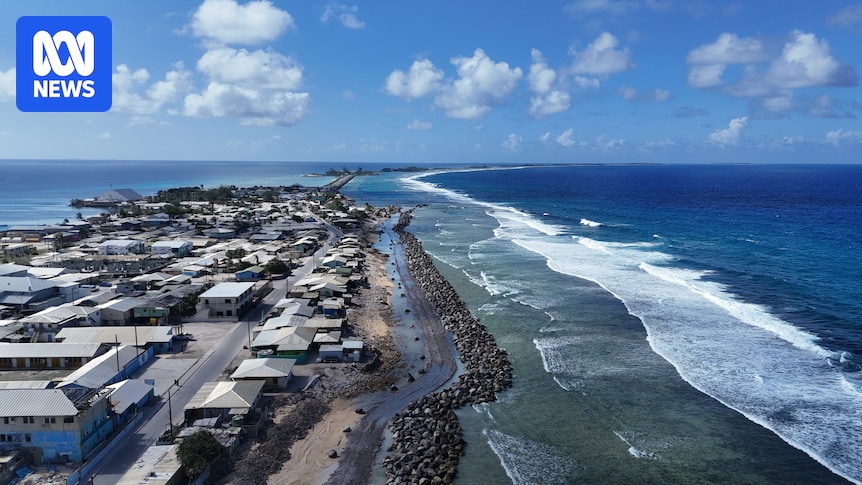Island Nations Build Sea Walls: A Viable Long-Term Solution to Rising Seas?
The rising tide of climate change is quite literally swallowing up island nations. Faced with the existential threat of inundation, many are investing heavily in sea walls – massive coastal defenses designed to hold back the encroaching ocean. But are these concrete barriers a viable long-term solution, or merely a costly delaying tactic? This article delves into the complexities of sea wall construction and its implications for island communities and the global fight against climate change.
The Urgent Need for Coastal Defenses
Small island developing states (SIDS) are disproportionately vulnerable to the impacts of climate change, particularly sea-level rise. The consequences are devastating: erosion of coastlines, saltwater intrusion into freshwater sources, increased flooding, and displacement of populations. For nations like the Maldives, Tuvalu, and Kiribati, the very existence of their landmass is at stake. Sea walls, therefore, represent a seemingly crucial line of defense.
Examples of Sea Wall Projects:
- The Maldives: This island nation has invested significantly in sea wall construction, creating barriers around many of its inhabited islands.
- The Netherlands: While not an island nation, the Netherlands' extensive experience with water management offers valuable insights into both the successes and limitations of sea wall technology. Their innovative approaches to water management serve as a case study for SIDS.
- Fiji: Fiji is implementing a combination of approaches, including seawalls, mangrove restoration, and community-based adaptation strategies.
The Pros and Cons of Sea Walls
While sea walls offer immediate protection from storm surges and erosion, they are not without their drawbacks.
Advantages:
- Immediate Protection: Sea walls provide an immediate, visible defense against rising sea levels and storm surges.
- Reduced Erosion: They can help protect coastlines from erosion, preserving vital land and infrastructure.
- Improved Infrastructure Protection: Seawalls safeguard crucial infrastructure like ports, airports, and settlements.
Disadvantages:
- High Costs: The construction and maintenance of sea walls are incredibly expensive, placing a significant burden on already resource-constrained island nations.
- Environmental Impact: Sea walls can disrupt natural coastal ecosystems, affecting biodiversity and potentially exacerbating erosion in adjacent areas. They can also alter sediment transport patterns, leading to beach erosion further down the coast.
- Limited Lifespan: Sea walls may need significant maintenance and even eventual replacement as sea levels continue to rise. They are not a permanent solution.
- Aesthetic Impact: The visual impact of large-scale sea wall projects can be detrimental to the natural beauty and tourism appeal of island nations.
Beyond Sea Walls: A Holistic Approach
While sea walls can play a role in mitigating immediate risks, they are not a sustainable long-term solution. A holistic approach that incorporates various strategies is essential. This includes:
- Investing in Nature-Based Solutions: Restoring and protecting coastal ecosystems like mangroves and coral reefs offers a more sustainable and cost-effective way to protect coastlines. These natural barriers provide excellent protection and enhance biodiversity.
- Improved Drainage Systems: Effective drainage systems can reduce the impact of flooding.
- Community Engagement and Relocation Strategies: In some cases, planned relocation may be necessary, requiring careful community engagement and support.
- International Cooperation and Climate Change Mitigation: Reducing greenhouse gas emissions globally is the most crucial step in addressing sea-level rise. This requires international collaboration and commitment to ambitious climate action.
Conclusion: A Necessary but Insufficient Measure
Sea walls are a necessary tool in the immediate fight against rising sea levels for island nations. However, their limitations must be acknowledged. A long-term strategy requires a multifaceted approach that incorporates nature-based solutions, community engagement, and aggressive global action on climate change. Simply building higher walls is not a sustainable solution; we must address the root cause of the problem. The future of island nations hinges on a combination of adaptation and mitigation strategies, working together to ensure the survival and prosperity of these vulnerable communities.
Call to Action: Learn more about the challenges facing island nations and support organizations working to address climate change. You can find numerous resources and organizations dedicated to climate action and sustainable development online. Let's work together to build a more resilient future.

